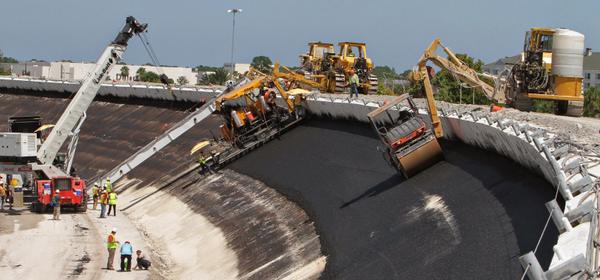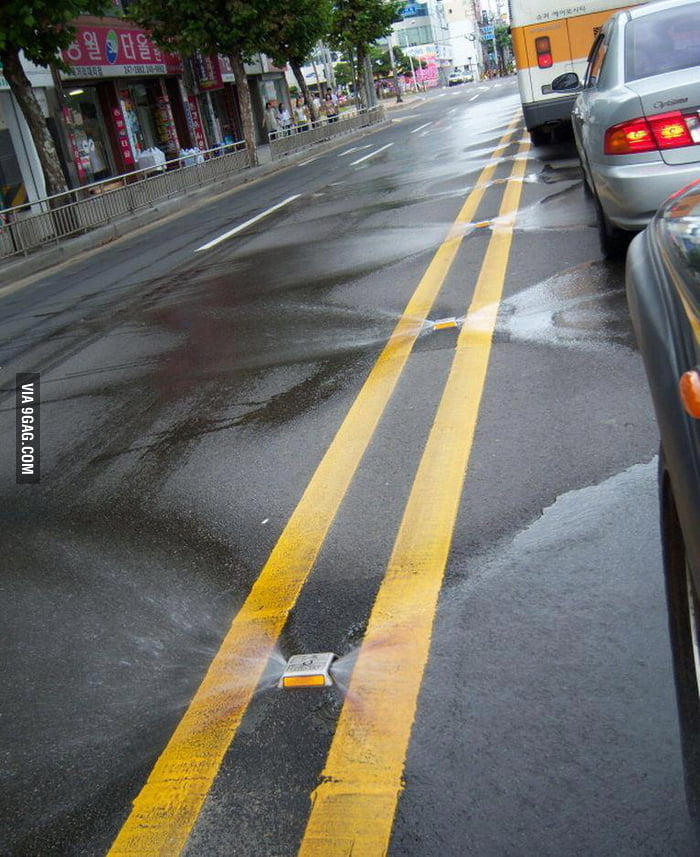bhall II wrote:An inverted version of the Nordschleife's Carraciola-Karussell, in which the outside line has more positive camber than the inside line, could work...
http://i.imgur.com/HEoa2G3.jpg
It would present a challenge, though. I don't think F1 tires particularly like banked corners.
Hi, bhall!
Variable sideslope (camber) implies that the space beyond the curve (runoff area) has to be increased.
You know, the problem here is that curves like Nordschliefe carrousel survive today only because they are grandfathered.
That´s the reason why the Autódromo Hermanos Rodríguez will not use the famous Peraltada (sigh) is because there is no way to move the baseball stadium that lies beyond it.
Loss of Peraltada corner unavoidable says Tilke
Current designer could not find a way to create the extra runoff needed without moving the stadium at the inner part of the curve

As you mention, the traditionally the solution has always been a parabolic shape (or, as you say, an ¨inverted¨ profile of the Carousel).
Brooklands variable sideslope, circa

Building a high sideslope curve is not easy, if digression is allowed.
That´s a picture a friend sent me (by Francisco Gómez): it´s not easy to hold in place a paver and a compactor...

As you can see, you introduce problems in asphalt compaction, as the equipment is leaning on one side, thus exerting variable force on the pavement.
Now,
how great should be the increase in grip to be able to overtake?
Allow me to digress a bit again. As you know, I prefer numbers over opinions, so, let´s play with numbers a bit.
The problem here is that,
with a slight increase in grip provided through banking, you need a long curve if you wish for the overtaker to catch the overtaken before the exit of the curve, where the overtaken can block.
For example, I take the Renault curve, which is the longest curve at Catalunya track (the one in red thick lines, lower left:
The numbers for radius and length I have deduced, so they can have errors

Length of the curve: 198 m
Radius: 111 m
Deflection (the angle between entrance and exit straights): 102 degrees
Maximum speed: 195 kmh (from FIA site)
The centripetal acceleration I arrive to is 2.7 Gs, or, what is the same, the lateral friction coefficient, plus any sideslope already in place, is 2.7
The time it takes to travel through the curve is a mere 3.7 seconds.
Now, if you increase the lateral grip to 2.85 Gs (by increasing banking 15%) you can get an increase in speed to 200 kmh.
This means that
by increasing grip 15% you gain only 5 km/h. In the 3.7 seconds it takes to move through the curve you gain only 5 meters.
Let's say, for the purpose of this post, that an advantage of 15 meters would do the trick and allow you to overtake. Yes, I know the cars are shorter, but they are not bumper to bumper and you need a gap to take again the race line.
To gain 15 meters through the curve you need to go at 210 kmh while the overtaken goes at the same 195 kmh we assumed initially as the "regular speed" for the curve.
This means that, at the Renault curve in Catalunya, the overtaker has to produce 3.2 Gs laterally, while the overtaken uses only 2.7 Gs. This will give you a difference in time to travel the curve of a mere 0.3 seconds. The difference in grip is 3.2 - 2.7 = 0.5 Gs.
Conclussion:
you need 0.5 Gs of advantage in grip if you want to overtake at Renault. That can only be achieved by a VERY high banking of 30 degrees.
For regular cars, without ground effect, well, any increase in sideslope gives you an advantage that might be enough to overtake, because you are using around 1.2 G´s: that´s why, I think, people still enjoy Carousel on weekends with their street cars.
For cars that depend on aerodynamic forces for grip, sideslope is not that important, because gaining 0.2 G´s when your car is developing 2 or 3 G´s is very little: in the time it takes to traverse the curve you do not get enough advantage.
So, what can we do? Well, we can lengthen the curve, can´t we?
If the Renault curve were longer, what would happened? I'll add the length of the transition that exists after the circular part of Renault (the curve with the thick orange lines in the previous image). It measures 193 meters more, for a total length of 393 m.
Now the overtaken uses 7.2 seconds to travel the curve. I'll spare you the numbers, but the overtaker now only needs a grip of 2.9 Gs!
As the overtaken car is using a grip of 2.7, you need a banking differential of only 20%. This is how it would look in real life a first drawing showing a section of the curve:

Notice that a car running between the two I ¨drawn¨ in the previous image would have problems at Carousel if using ground effect skirts, because of the discontinuity in the slope. That´s why I drew a transversal profile with a circular shape.
I think that explains a little the difficulties you have overtaking in cars with aerodynamic grip.
If Indycars still use high sideslopes is
for them not to brake as much as F1. More than allowing to overtake, sideslope allows for a constant velocity in a track with short straights and high deflections (180 degrees curves).
Hope this helps to understand F1 a bit.














